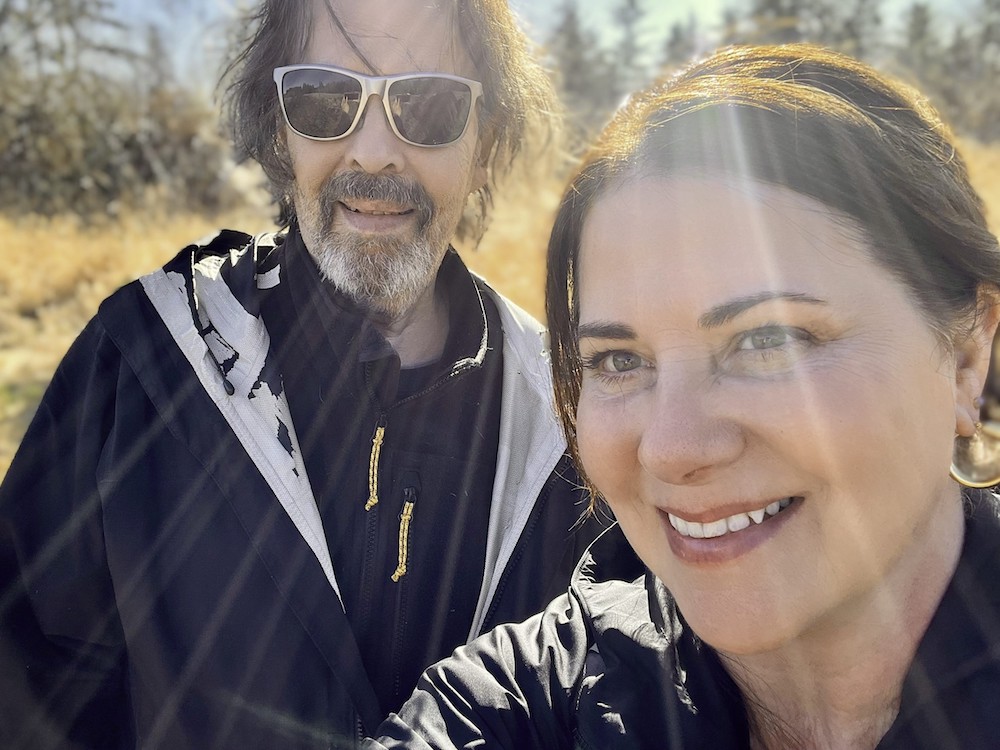So you may or may not have noticed, but in this corner of our beleaguered planet there are quite a lot of trees. Sure, there are trees all over the world, but few as large as our coastal rainforests — and there are not as many trees as you’d think.
As Elizabeth Kolbert wrote in the New Yorker earlier this year, “Even if you haven’t been to the woods lately, you probably know that the forest is disappearing. In the past 10,000 years, the Earth has lost about a third of its forest, which wouldn’t be so worrying if it weren’t for the fact that almost all that loss has happened in the past 300 years or so. As much forest has been lost in the past 100 years as in the 9,000 before.”
By “lost,” of course, Kolbert doesn’t mean trees have been misplaced, like your car keys or your credit card. They’ve been taken, almost all of them by humans, and mostly at an industrial scale that imperils our very existence on this planet.
Industrial logging companies in California, Oregon, Washington, British Columbia and Alaska have been world leaders in savaging old-growth forests. They need to stop.
Yes, a few areas have been “protected,” and the rate of old-growth liquidation has slowed, mostly because there’s not much left to log. But clear cutting old growth hasn’t stopped.
Worse, the very act of objecting to harvesting old-growth trees has been criminalized in many jurisdictions (Fairy Creek, anyone?), even though scientists agree that forests are utterly key to mitigating the effects of climate change.
“Despite what you might have heard,” write the authors of a new book on forests, “climate change will not destroy the planet. A million years from now, this round orb will still be hurtling across the universe, still attached to its star, still covered with mountains and oceans and deserts. Damaged ecosystems will regenerate. Burnt forests will regrow. Melted glaciers will refreeze. The only thing missing from this picture is people. Climate change will be hell on human civilization.”
In Canopy of Titans: The Life and Times of the Great North American Temperate Rainforest, we are offered a timely, welcome and provocative biography of our corner of the world’s greatest assets, our life-affirming forests.
We are also served up a gut-wrenching chronicle of how recklessly we have laid, and continue to lay, waste to the richest forest ecosystem on Earth.
Written by Oregon-based journalists Paul Koberstein and Jessica Applegate, Canopy of Titans makes a powerful case in defence of our forests. It also makes the case for what is called “proforestation.”
It’s a fascinating and important read at a time when the role of forests as more than sources of timber for humans to burn or mill or pulp for paper has gotten a lot of attention, not all of it good.
With the rise of climate awareness, a big fuss was made three years ago at Davos when a tech mogul announced he was working with the Trump administration to plant a trillion trees. Republicans have said that doing so “is an effective way to combat climate change, even as they push for more planet-warming oil and gas production,” wrote David Gelles in the New York Times. “But scientists are still debating just how much planting trees can actually help.... There is simply not enough land on Earth to tackle climate change by planting trees alone.”
The authors of Canopy of Titans concur. They aren’t against planting trees, although it’s a strategy that is a bit late to the game. “We know the best time to plant a tree was 1,000 years ago,” they write. Meanwhile, the best time to stop cutting down 1,000-year-old trees, even 200-year-old trees, is now.
Want to know more? Well, the Vancouver launch of their book takes place this Sunday, Oct. 15, at Upstart & Crow, when I will host Koberstein and Applegate in a discussion of their vital work. Register for a free ticket.
And we’re proud to host the authors the following weekend in Tofino at our first out-of-town book launch in partnership with one of our favourite indie bookstores, Tofino’s Mermaid Tales. Tickets to that event, on Saturday, Oct. 21, can be had for free.
Here are a few take-homes from a Q&A with the authors of Canopy of Titans.
Why this book?
We’ve always been fascinated by the idea that the forests in western Oregon are part of a rainforest extending from the redwoods in Northern California to the Tongass National Forest in Alaska. We wanted to write a magazine article about it, but as we began our research we realized there was too much great material for just one article. So, we wrote a book.
Where and what is the Great North American Temperate Rainforest?
The rainforest runs for 2,500 miles (4,000 kilometres) from the Russian River near Santa Rosa, California, to Kodiak Island, Alaska, on the far west side of the Gulf of Alaska. Some ecologists, such as Dominick DellaSala, think the rainforest extends much farther south to the southern end of the range of coastal redwoods. But we are relying on a map generated by Ecotrust which places the southern boundary at the Russian River.
The temperate rainforest has three of the seven tree species on Earth that grow taller than 300 feet (90 metres): coastal redwood, Douglas fir and Sitka spruce. (The others are the giant sequoia in the Sierra Nevada; the yellow meranti in Malaysia, the world’s tallest tropical tree; and two Australasian eucalypts, blue gum and mountain ash.)
Why is this forest so important?
It’s the largest temperate rainforest in the world. It’s home to the world’s tallest trees. Acre for acre, it stores more carbon than any other forest in the world.
What role do forests, especially old-growth forests, play in the fight against climate change?
If all we do is stop burning fossil fuels, that alone won’t be enough to resolve the climate crisis. We must also address the carbon we’ve emitted into the atmosphere since the beginning of the industrial age in the 1700s, mostly in the form of carbon dioxide and methane. This legacy carbon, which amounts to about 300 gigatons, is responsible for climate disasters we see today — heat domes, hurricanes, melting glaciers and rising sea levels.
Forests are the only mechanism we have that can remove this carbon at the necessary scale and store it for centuries. And they do it for free. This is why we need to protect forests, especially old-growth and mature forests.
What is carbon sequestration and what does it have to do with trees?
Carbon dioxide is a greenhouse gas that’s two parts oxygen and one part carbon. Carbon is also in methane, an even more potent greenhouse gas. Removing carbon from the air is a crucial component in our fight for the climate. Trees, soil, oceans, store vast amounts of carbon by drawing it out of the air and storing it indefinitely, essentially cleaning the air. Trees are one-half carbon.
You write: “Proforestation could steer the entire planet toward victory in this epic battle for the future.” What is proforestation and how does it differ from reforestation?
Reforestation means replanting the forest after a harvest. Proforestation means protecting old-growth trees as well as mature trees greater than 80 years of age. It also means increasing harvest cycles to no fewer than every 80 years, and preferably 120 years.
What’s the tempo and scale of clear cutting and logging in general in the Pacific temperate rainforests as opposed to the 1980s and 1990s?
The pace of logging old-growth forests — defined as forests older than 175 to 250 years of age — has slowed down to a crawl compared to what was going on several decades ago, which is good. However, the industry is still targeting the few remaining old-growth trees in Oregon, British Columbia and Alaska.
Your book is about more than just trees. It is about the forest ecosystem, and the keystone species that tie it together. What are the keystone species in the rainforest, and why are they important?
A keystone species is a species that nourishes other species and helps them survive. In the rainforest, there are at least two keystone species that directly benefit the climate. Salmon is one. Studies show that trees located near salmon spawning sites grow three times faster than trees located farther away. A faster-growing tree absorbs more carbon from the atmosphere.
Beaver is another. Studies show that salmon survival rates triple in estuaries where beavers are present. Unfortunately, in Oregon the state department of fish and wildlife allows people to trap beaver on public lands. J. Boone Kauffman, a researcher at Oregon State University, told us, “There is nothing you could do today that would be a better cost-effective climate change mitigation strategy than to eliminate trapping beaver.”
Ian Gill will host Koberstein and Applegate in a discussion of their vital work at Upstart & Crow in Vancouver on Sunday, Oct. 15, followed by a launch at Mermaid Tales in Tofino on Saturday, Oct. 21. Both events are free. ![]()
Read more: Books, Environment
This article is part of a Tyee Presents initiative. Tyee Presents is the special sponsored content section within The Tyee where we highlight contests, events and other initiatives that are either put on by us or by our select partners. The Tyee does not and cannot vouch for or endorse products advertised on The Tyee. We choose our partners carefully and consciously, to fit with The Tyee’s reputation as B.C.’s Home for News, Culture and Solutions. Learn more about Tyee Presents here.


















Tyee Commenting Guidelines
Comments that violate guidelines risk being deleted, and violations may result in a temporary or permanent user ban. Maintain the spirit of good conversation to stay in the discussion and be patient with moderators. Comments are reviewed regularly but not in real time.
Do:
Do not: